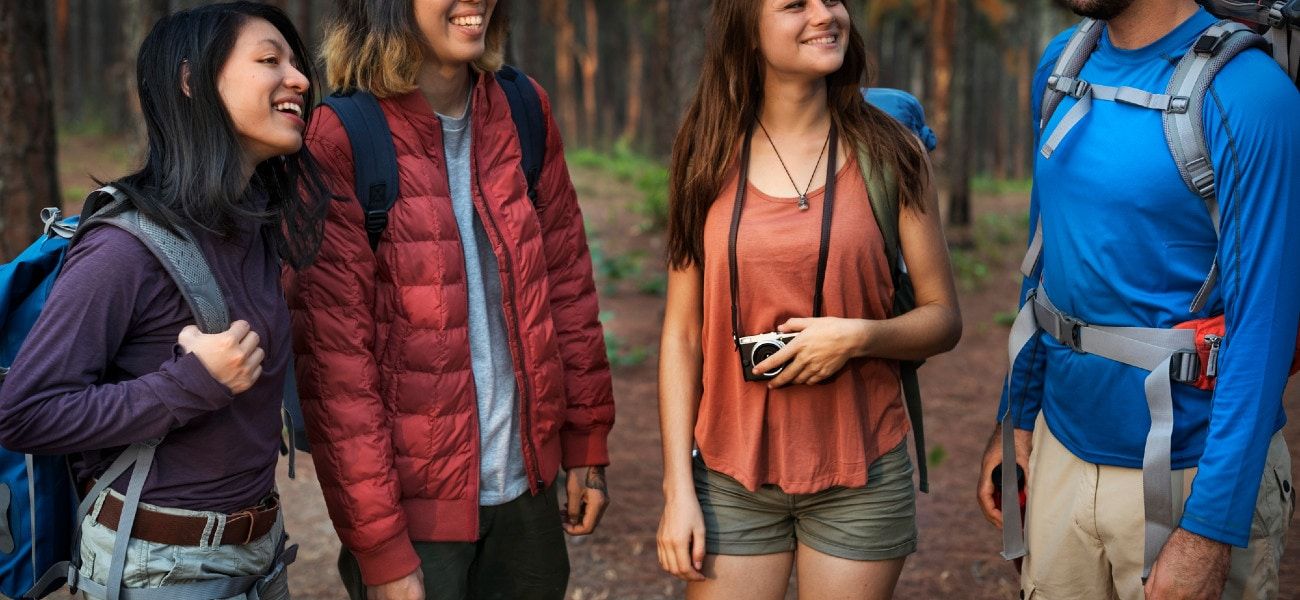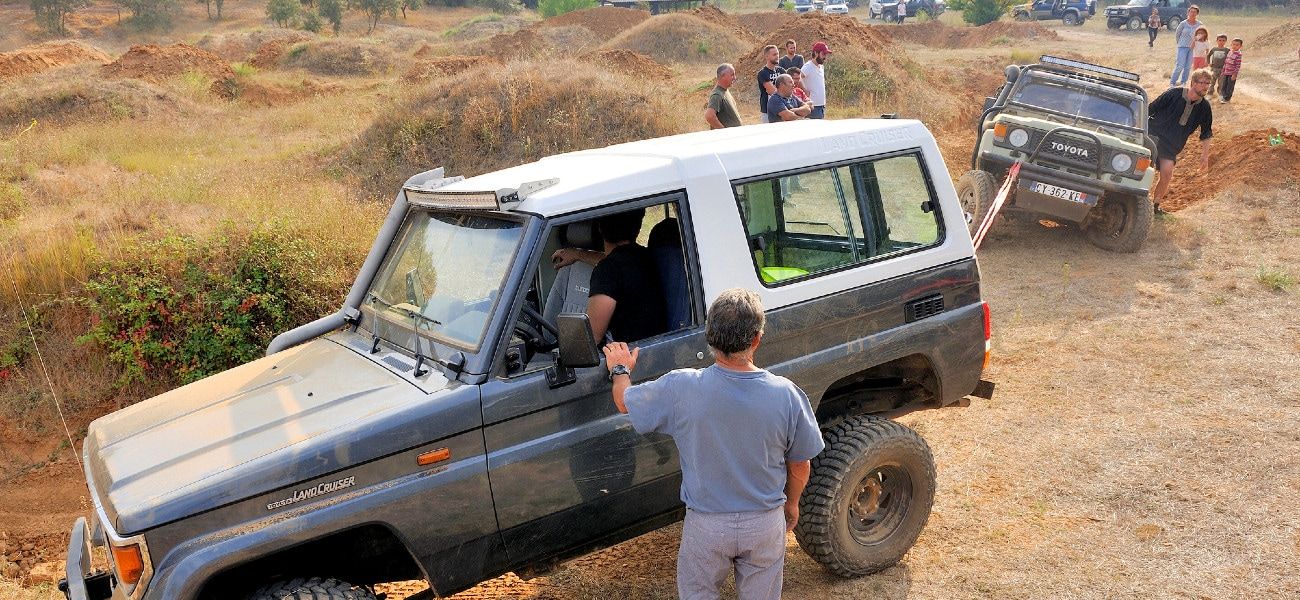Australia is a big country, with almost every climate region represented from North to South, we have an abundance of options when it comes to hiking or trekking. Indeed there are very few other countries that have such a range and as such, Australia is a fantastic country for heading out onto the trail.
But with this climatic variation comes a range in temperatures. From sub-zero winter conditions to the dry and dusty outback to the hot and wet North – you will need to wear different clothes for your adventure depending on when and where you are.
Read on and this list will let you know your best options from head to toe, summer to winter.
Hats
Let’s start at the literal top, our heads. When outside in Australia, at any time of the year, it's a good idea to wear a hat that will provide you with some sun protection as after all, we have some of the harshest sun conditions on the planet.
When it's hot and sunny, a wide brim or a front baseball-style cap will protect your face, head and shoulders from some of the sun’s effects, while keeping you cooler as you hike.
When it's cold, however, we may want to opt for a different style, something that will keep us warm when a bitingly cold wind sweeps up from the south and rattles our teeth. The obvious choice is a beanie, a soft warm beanie to keep your head warm and your core temperature at the right level.
Beanie's don't offer any sun protection, however, so if it's cold but also very sunny, some sunglasses and a bandana across your face will also help, along with sunscreen of course.
Hats are important for our temperature control when outside and should be a go-to item you take with you, if you would like more information on hats, please ensure you check out our guide on the best hiking hats in Australia.

Shirts and Tops
There is a wide range of fashion choices when it comes to clothes, and hiking clothes are no different. The conditions you will be in will determine what style of shirts or tops you will be hiking in.
When it comes to what to wear hiking in summer, we could choose a long sleeve top with a collar that covers our entire upper body and assists in both sun and insect avoidance. Or we could opt for a good old T-shirt, as long as it covers our shoulders.
The key here is the materials the shirts are made of. Whether it is hot or cold, you want materials that can breathe and are designed to pull moisture away from your body. Some synthetics like nylon are very lightweight, breathable, durable and dry fast, so they are great for this.
Other things to look for are the level of UV ray blocking, ventilation and even anti smell properties of many hiking shirts on the market these days.
The Skin Cancer Council has some good advice on the degree of UV protection that your clothing should offer.
When it comes to winter or very cold climates, the same style of shirt is also necessary as you will still sweat and generate heat, but the better option is a T-shirt style, with short or long sleeves as you will almost always have another layer on top.
One piece of advice is to stay away from cotton shirts as when they get wet, they take a long time to dry and will keep you cold.
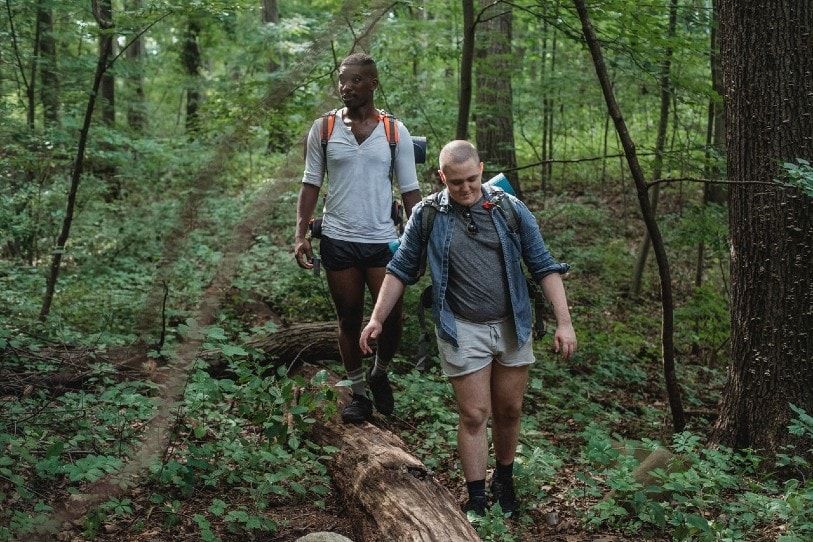
Jackets, Hoodies, Jumpers and Layers
When it's hot, we will often hike with only a short or a thin top on, but when it gets dark and we stop for the night, it will often turn cold and you will want a jacket or jumper to put on to keep you warm.
When it's cold, the story is a little different as we will want multiple levels of clothes to keep our temperature regulated both hiking and at night.
This is where the layering principle comes in, multiple layers of clothing (as opposed to one massive fluffy puffer jacket) is what is needed to keep you at the right temperature.
If it's really cold we may want to start with a singlet, followed by a T-shirt or shirt, then a thin jumper or even a hoodie, then a thicker jacket or raincoat. If you get hot, you strip a layer, if you get cold you put one back on.
The collection of possible clothes for winter hiking is endless but if we keep the same principle of lightweight, moisture-wicking and breathable fabrics, you can't go too far wrong.
When it comes to rain (or sleet or even snow) it’s always a good idea to have a waterproof final layer or a ‘shell’ layer to keep the water off your core body.
Thin, breathable Gore-Tex is the ideal material for your outer shell as it's breathable, letting moisture out but not back in, and they also fold up small into your backpack when not in use.
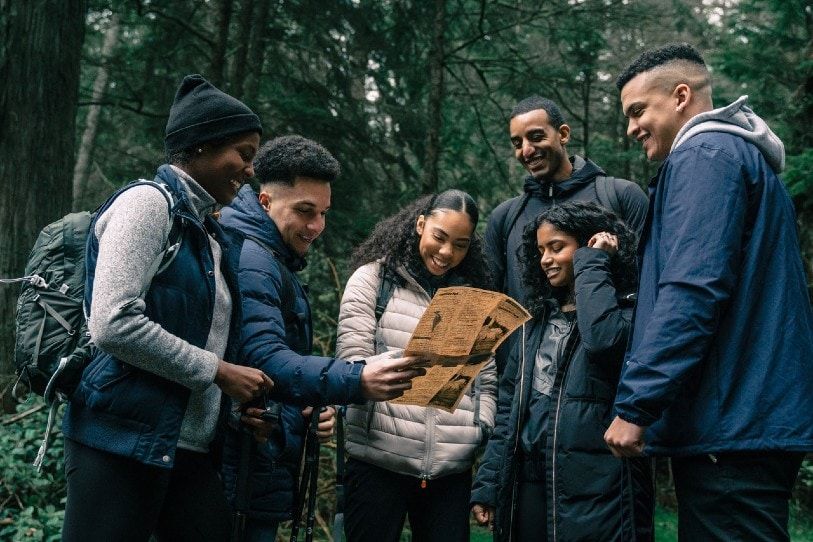
Pants and Shorts
When it's summer, or you are in a hotter part of the country, many people love to hike in shorts. Shorts are great as they are lightweight and comfortable and there are many different styles out there.
Like our tops, we want a material that can breathe and dry quickly like nylon or polyester. There are some downsides to shorts like sunburn, insect encounters or even just the bush scratching your legs up, so they are not always the bottoms of choice.
When considering what pants to wear hiking, long pants are great for both summer and winter or colder climates.
They protect you from the sun, insects and vegetation and have pockets for carrying some of your equipment, in summer we can wear ultra-thin and lightweight styles and in winter we can often just increase the thickness of our pants for increased insulation.
Thermal underwear style pants are not recommended to be worn underneath while hiking, however, as they can lead to overheating on the trail. They should only be worn at night as extra insulation.

Socks
Our feet are arguably the most important part of our body when we head out onto a trail and if we don’t take care of them, your hike will end early.
It’s a good idea to invest in some quality socks that will help avoid dreaded blisters. Never wear cotton socks as they will not dry out, but opt for merino wool or synthetic socks instead.
In summer, thinner socks that stop around your ankles (unless you are in some pretty thick jungle) is the way forward as they are lightweight and can be worn with shorts. Longer, thicker socks are more suited to colder conditions where you not only need some foot protection but some warmth on your legs too.

Shoes and Boots
Hiking shoes are indeed their own category of footwear. However, given the extremely wide range of styles and brands, there are some considerations you need to make.
The style of shoe you go with will depend on the conditions you will be hiking in. Easy trails, regardless of distance, generally suit a lower profile sneaker style design, while hilly, rocky terrain requires a boot style that supports your ankles and lower legs.
Unlike other items, the summer/winter difference is not as important with shoes (unless you are hiking through deep snow or wetlands).
What's most important is that you find the right fitting shoe for your feet and that they are comfortable and supportive.
There is a range of brands of hiking shoes as its big business that you can find all over the country, some brands fit different peoples feet better than others and the best advice is to go and try on a few pairs until one feels right.
Having quality shoes is always a good idea considering they take so much of the brunt from our bodies. Making sure the sole is solid and won't fall apart quickly and a good lacing set up to make sure your shoes are snug to your feet is the best place to start.
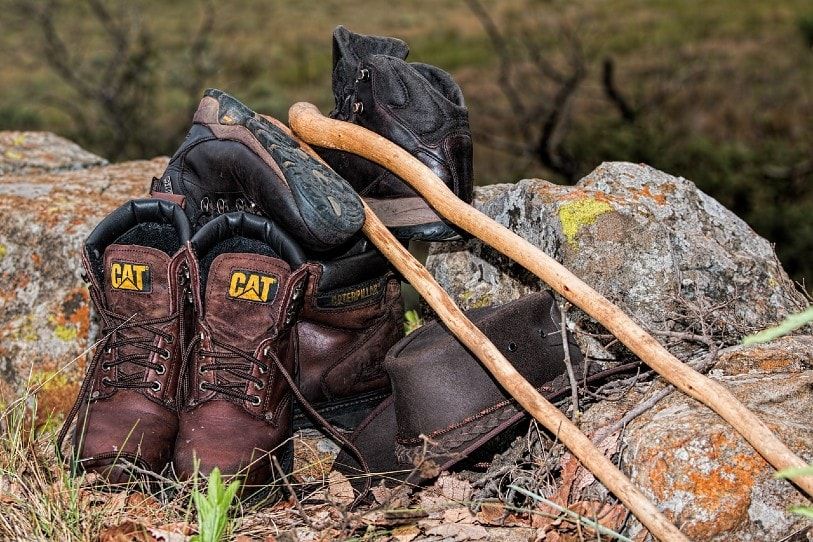
Hands
The weather in many parts of the country can get cold, very cold, and even as late as November. One item that many people tend not to think about are a pair of gloves. Gloves will keep your hands warm as you move and can also help with reducing hand blisters if you are using hiking poles all the time.
There are very lightweight gloves made from nylon that can breathe and keep you warm and then there is a wide range of gloves right up to proper snow skiing ones that not only keep you warm but also keep you dry. The colder it is, the thicker the gloves you will want.

Conclusion
What to wear hiking in winter versus summer is a big consideration and you should always choose the clothes best suited for the environment.
We will always need the essentials like tops, pants and shoes, but extras like hats and jackets will make your trip more comfortable.
Remember that the fabrics make a big difference in terms of your ability to keep moisture off your body and you should always keep that in mind when buying any hiking apparel or clothing and when preparing for your next summer or winter hike.
This article may contain affiliate links. I will earn a commission if you choose to purchase a product or service after clicking on my link. This helps pay for the cost of running the website. You will not be disadvantaged in any way by using my links.
Note that while every effort is made to ensure the accuracy of the information on this page, there may sometimes be errors. Check all specifications with the manufacturer before purchasing any product.

